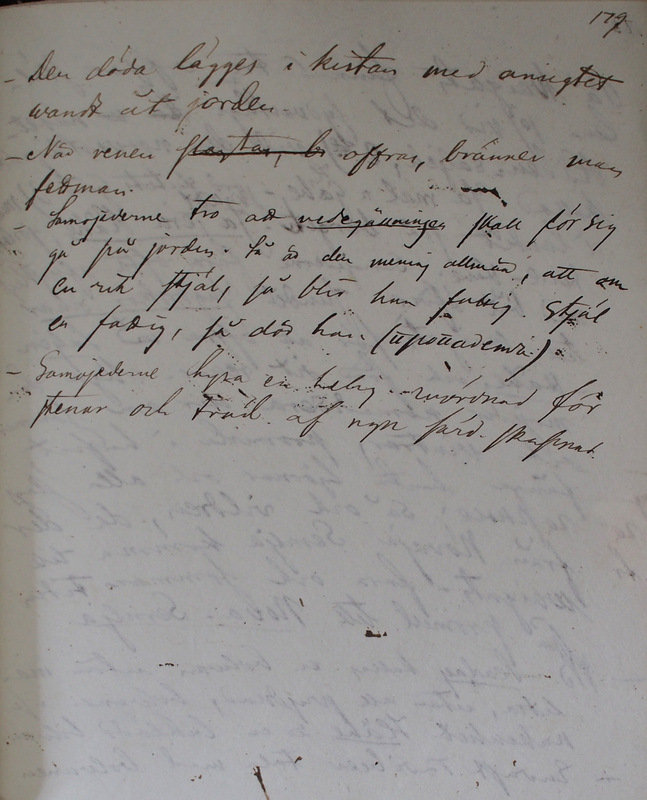Ethnographiska, historiska och statistiska anmärkningar. 179
Title
Ethnographiska, historiska och statistiska anmärkningar. 179
Description
|
Den döda
lägges i kistan med ansigtetwandt åt jorden. När renen slagtas, b offras,
bränner manSee [röka].
fettman. Samojederne tro att vede[r]gällningen
skall för sigInstead of ideas of restitution in the afterlife, the Nenets share conceptions of their life being predestined. (Chomič 1976: 21–22)
gå på jorden. Så är den mening allmän, att om en rik stjäl, så blir han fattig. Stjäl en fattig, så dör han. (пропадаетъ). Samojederne hysa en helig wördnad för stenar
och träd af ngn[någon] särd[särskild]. skepnad.See [bolvan].
|
The deceased is placed in the coffin with his face turned to the earth. When a reindeer is sacrificed, its fat is burnt.The Samoyeds believe that there will be compensation on earth. There is a general understanding that if a rich man steals, he becomes poor. If a poor man steals, he will die. The Samoyeds feel a sacred awe for stones and trees that are of a special shape. |

